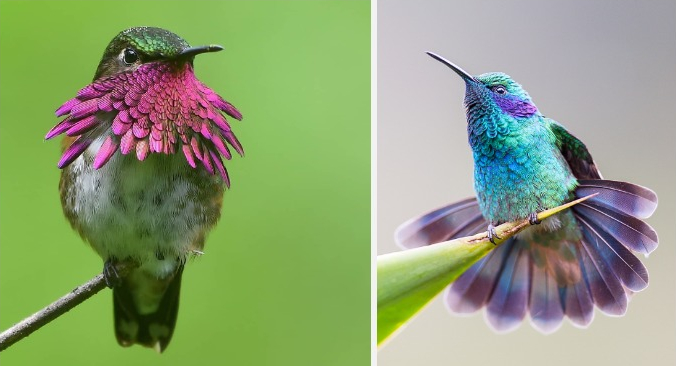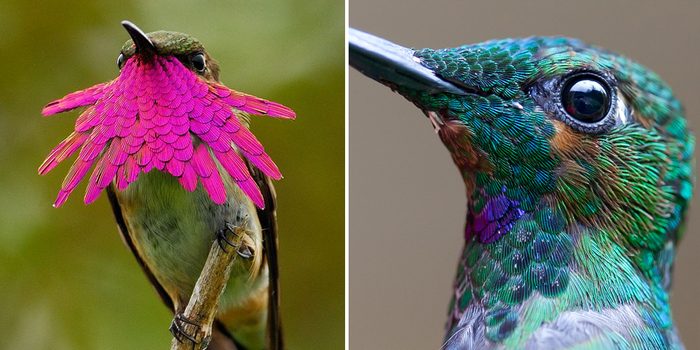Hummingbirds: The Majestic Rulers of the Colorful Avian World
A new study led by Yale’s Richard Prum finds that the range of colors in the plumage of hummingbirds exceeds the color diversity of all bird species combined.

Diversity of hummingbird plumage color. Photographs of males of eight of the 114 hummingbirds analyzed, showing the incredible diversity of hummingbird plumage color, including saturated blues, greens, and purples. a Panterpes insignis, b Boissonneaua jardini, c Heliodoxa aurescens, d Lophornis ornatus, e Juliamyia julie, f Coeligena bonapartei, g Schistes geoffroyi, and h Atthis ellioti. (Photos reproduced with permission of: a.–f. Glenn Bartley; g. Wilmer Quiceno; h. John Cahill.)

Yale ornithologist Richard Prum has spent years studying the molecules and nanostructures that give many bird species their rich colorful plumage, but nothing prepared him for what he found in hummingbirds.
The range of colors in the plumage of hummingbirds exceeds the color diversity of all other bird species in total, Prum and a team of researchers report June 23 in the journal Communications Biology.
“We knew that hummingbirds were colorful, but we never imagined that they would rival all the rest of the birds combined,” said Prum, the William Robertson Coe Professor of Ornithology of Ecology and Evolutionary Biology.

For the study, Gabriela Venable, a former undergraduate student in Prum’s lab (now a graduate student at Duke University), collected data on the wavelengths of light reflected by feathers of 1,600 samples of plumages from 114 species of hummingbirds. Researchers then compared this information with an existing dataset of colors found in the plumage of 111 other bird species, from penguins to parrots.

Using their knowledge of avian visual physiology, the Yale team was able to describe the diversity of avian plumage colors as seen by the birds themselves, including hues that are not visible to humans.
Birds have four types of color cones that are sensitive to red, green, blue, and ultraviolet/violet colors. So birds can see all the colors visible to humans. But they can also see a host of other colors that humans cannot see, including ultraviolet, and mixtures of ultraviolet with other hues, like ultraviolet-yellow and ultraviolet-green. These colors are as different from yellow or green as purple is from blue or red. One of the ways that hummingbirds add to avian color diversity is by producing more of these combination colors than other birds.

According to the team’s new findings, the diversity of bird-visible colors in hummingbird plumages exceeds the known diversity of colors found in the plumages of all other bird species combined, increasing the total of known bird-visible plumage colors by 56%. The colors revealed in the hummingbirds’ plumage include saturated blues, blue-greens, and deep purples that are most variable on the animals’ crowns and throats, which they show prominently during mating displays and social interactions.

The sheer breadth of hummingbirds’ colorful plumage is the result of nanostructures in their feather barbules, the smallest filaments that project from their feather barbs.
“Watching a single hummingbird is pretty extraordinary,” Prum said. “But the combination of versatile optical structures and complex sexual displays make hummingbirds the most colorful bird family of all.”